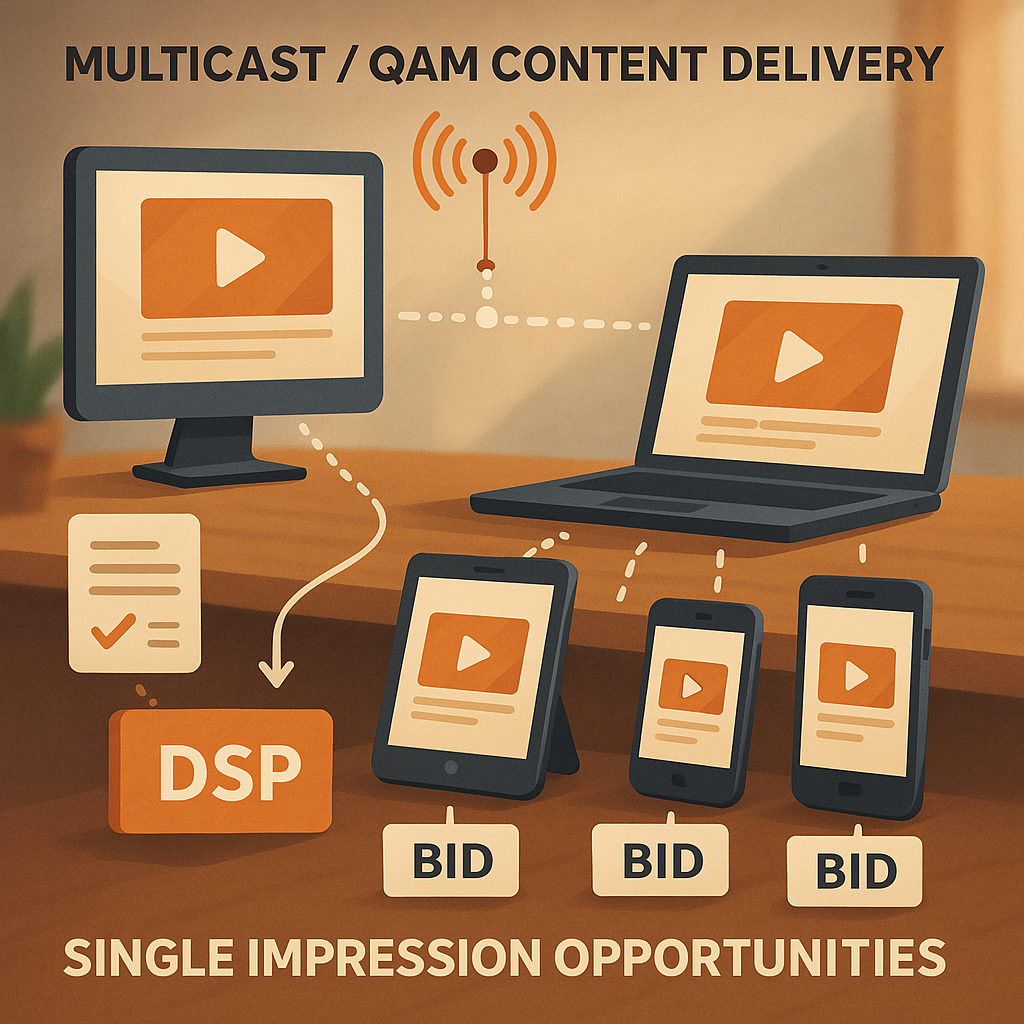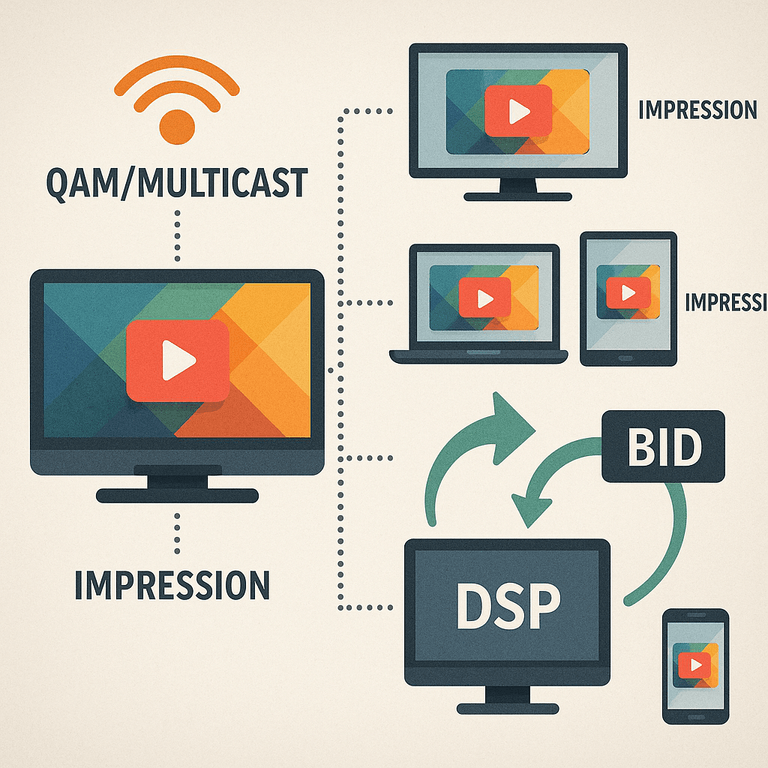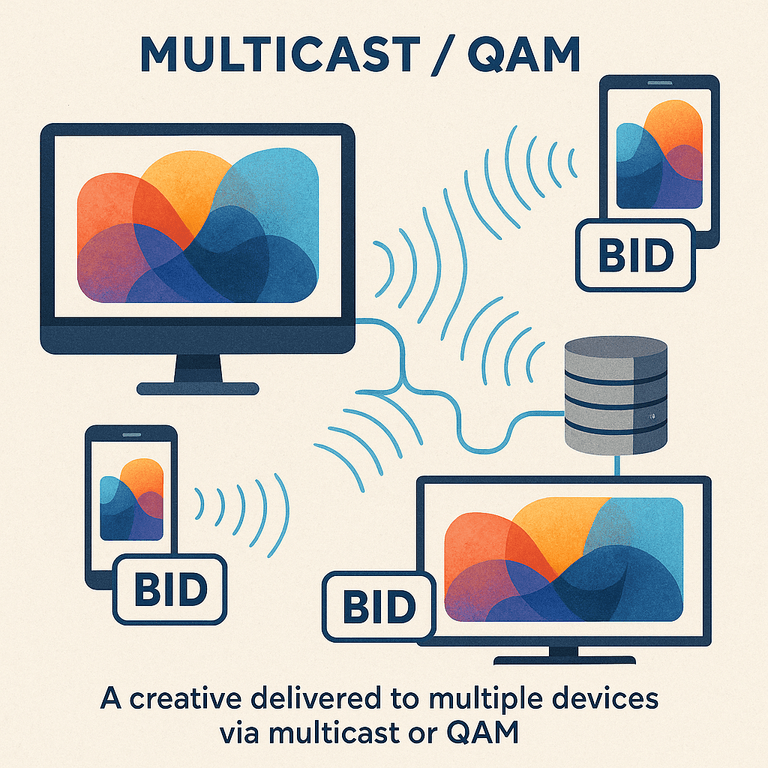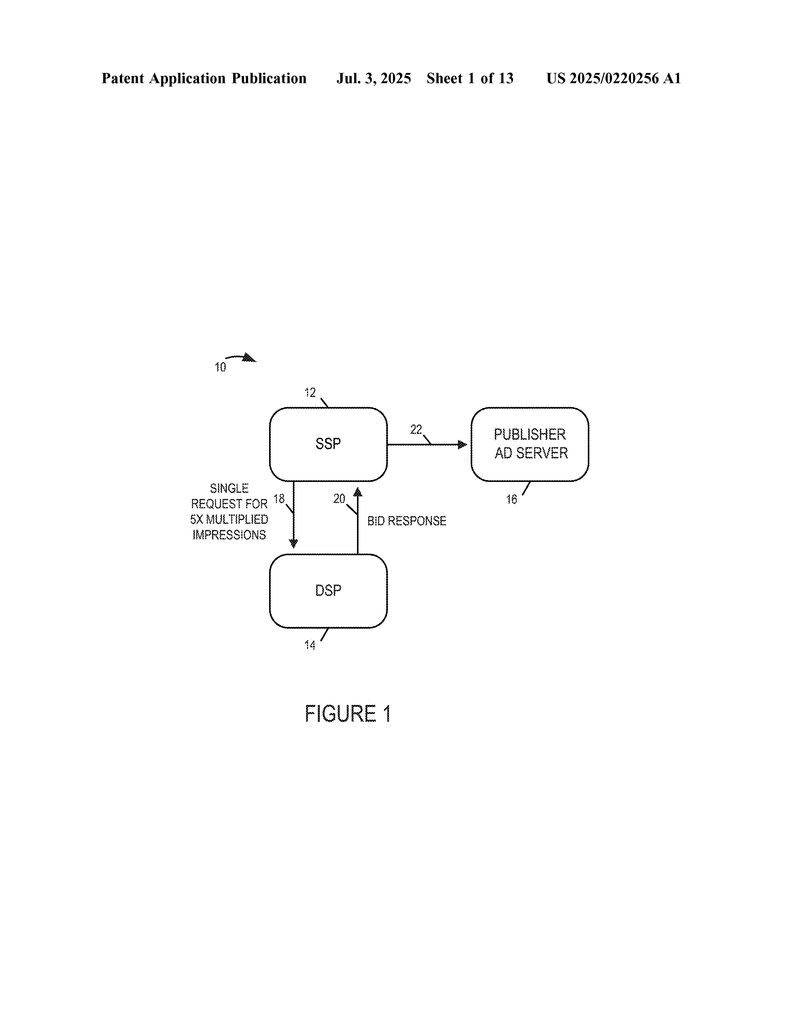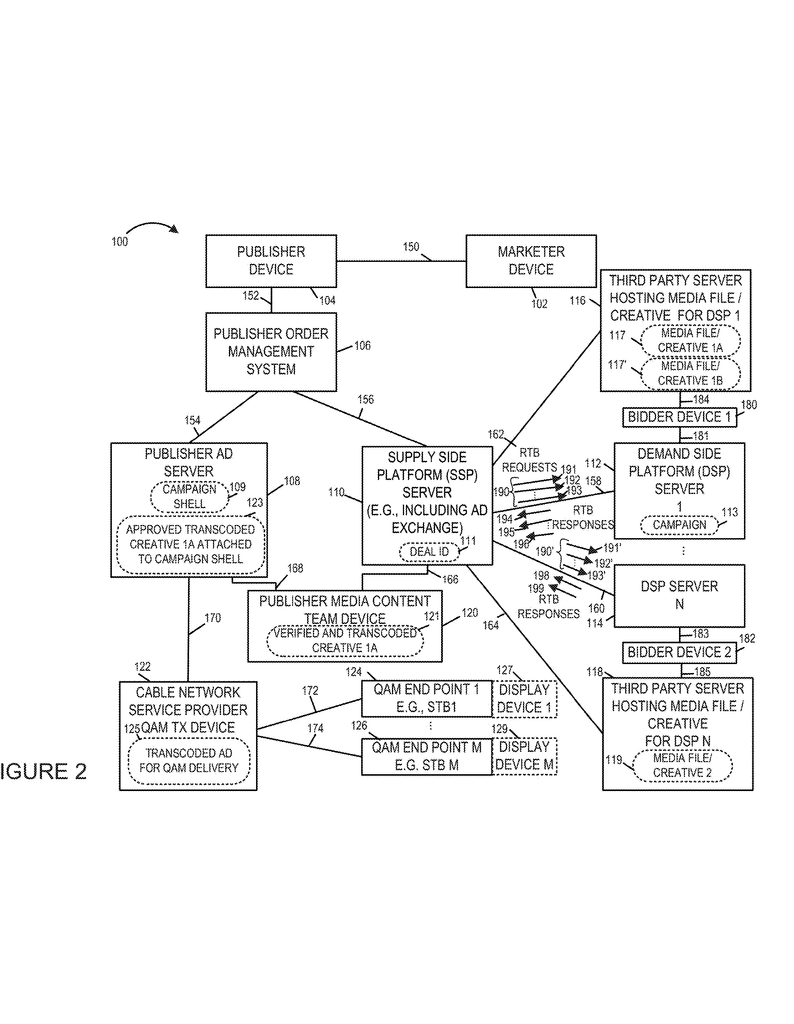Invented by Groysman; Alexander, Forman; Marc
Let’s explore a new way to deliver ads and content to many people at once, but with a much simpler process for everyone involved. This patent application introduces a special method that changes how advertisers and content providers work together. We’ll look into why this is needed, how it builds on what came before, and what makes this invention special.
Background and Market Context
When you watch TV or browse the internet, you often see ads pop up. These moments are called “impression opportunities.” For years, companies have tried to figure out the best way to decide which ad gets shown to which person at what time. This decision is often made through auctions. Different advertisers bid for the chance to show their ad to you. The highest bidder usually wins, and their ad gets shown.
But things get tricky when the same piece of content—like a TV ad—is sent to lots of people at the same time, like during a live sports game. This is called multicast or QAM (quadrature amplitude modulation) delivery. Think of it like broadcasting a signal that many TVs or devices pick up at once. Each person who sees that ad counts as one “impression.” If the ad goes to 100,000 TVs at once, that’s 100,000 impressions, all from a single delivery event.
In the world of digital advertising, companies called Supply Side Platforms (SSPs) and Demand Side Platforms (DSPs) help manage these auctions. Advertisers use DSPs to place their bids, and publishers (like TV networks or websites) use SSPs to offer up their ad space.
Traditionally, when ads are shown one at a time (like on a website), each impression is its own auction. This makes things simple. But for TV and multicast delivery, auctions often bundle many impressions together. This is done by using a “multiplier”—so the auction says, “win this, and you get your ad shown to 100,000 people.” But this bundled approach causes big problems for advertisers:
First, it’s hard for the advertiser to track how much they’re spending and if their campaign is on target. Second, it’s confusing to adjust budgets and reports when each auction could be for a different number of impressions. Third, many advertisers and their software tools are not built to handle these “multipliers,” so they simply avoid these deals altogether.
This leads to fewer bidders, less competition, and less money for the publishers. It also means fewer choices for advertisers, especially those focused on TV and large-scale content delivery. As more people watch content across different screens and devices, it becomes even more important to make these auctions easy and open to all.
The market needs a way to bring the simplicity of single-impression auctions to the big world of TV and multicast content. That’s what this patent is all about. It aims to help more advertisers take part in these auctions, making it easier to buy, track, and deliver ads—even when the ad is being delivered to thousands or millions of people at once.
Scientific Rationale and Prior Art
Before this invention, the only way to auction off big batches of impressions was by using multipliers. For example, a DSP might receive an offer that says, “Here’s an ad slot for 10,000 impressions.” The DSP has to handle this big number, adjust its spending, and make sure everything is tracked right. This causes a lot of headaches. Sometimes, the number of impressions can change from one auction to the next, making planning even harder.
Let’s imagine a typical setup. The SSP sends out a bid request to the DSP, along with a multiplier. The DSP has to calculate how much to bid for all those impressions, adjust its reports, and make sure it doesn’t go over budget. This process is complicated, and errors can happen. If the multiplier is different every time, the DSP has to do a lot of math and keep track of everything, which is not easy.
Because of all these issues, many advertisers choose not to take part in these auctions. That means less competition, and sometimes ads don’t get sold at the best price. Publishers miss out on potential revenue, and advertisers lose a chance to reach a big audience.
Previous systems tried to fix this by making DSPs smarter, but the changes were hard to implement and made DSPs more complex. The added complexity often outweighed the benefits. Some bidders would rather walk away than deal with the hassle.
At the same time, the media landscape has changed. TV is no longer just about cable; it’s now about smart TVs, streaming devices, and even traditional set-top boxes. Content is delivered through many channels, often using multicast or QAM techniques to reach lots of people at once. The need for a better solution has grown as more advertisers want to reach audiences wherever they are, on any device.
This is where the new patent comes in. The inventors realized that if the complexity could be handled on the supply side (the SSP), then DSPs could keep working the way they always have—handling single impression auctions, one at a time. This would let more advertisers take part, make the process simpler, and open up more opportunities for all.
In summary, the invention builds on past systems but solves a key technical problem: how to let advertisers bid on single impressions, even when the ad will be shown to many people at once. It does this by shifting the hard work to the SSP, allowing DSPs to focus on what they do best. This makes programmatic advertising more accessible and effective for everyone.
Invention Description and Key Innovations
This patent application introduces a clever way to run auctions for ads that will be delivered to many devices at once, without making things harder for advertisers. Here’s how it works, step by step:
Instead of bundling all the impressions together and sending them as a single big auction, the SSP breaks the process into several single-impression auctions. Each auction is for just one impression, just like advertisers are used to. But behind the scenes, these single auctions are tied to a bigger deal—a “package” that only gets delivered after a certain number of wins.
Let’s say a publisher wants to show an ad to 5,000 devices at once. The SSP sets up a deal for 5,000 impressions. Each impression is auctioned off one at a time, and each win is tracked. When a single bidder has won all 5,000 of these small auctions, that bidder becomes the winner of the whole deal. Only then is the ad delivered to all devices at once, using multicast or QAM. This way, the advertiser only has to think about single bids, and the system handles the rest.
Here are the key steps and features of the invention:
1. Single-Impression Auctions, Even for Mass Delivery
The SSP sends out individual auction opportunities to one or more DSPs. Each auction is for a single impression, but all are linked to the same big deal.
2. Win Counters for Each Bidder
Each time a bidder wins one of these small auctions, the SSP updates a win counter for that bidder and deal. The first bidder whose counter reaches the total number of impressions (say, 5,000) wins the whole package. This tracking happens on the SSP side, so the DSP doesn’t have to worry about it.
3. Deal IDs for Easy Tracking
All auctions for a deal are given a unique deal ID. This makes it easy to group them together and know which small auctions belong to the same big package.
4. No Multipliers Needed
Because each auction is for a single impression, there’s no need for multipliers. Advertisers don’t have to change their software or reporting tools. They just place bids like they always do.
5. Content Delivery Only After All Wins
The ad or creative is not delivered until a single bidder has won all the necessary small auctions. This avoids the problem of splitting up the delivery or having multiple creatives shown at once.
6. Accounting and Notification
Once a winner is determined, the SSP notifies the winning bidder and updates the accounting. The winner is responsible for all the bids they placed to win the deal. The system can handle different bid amounts for each small auction if needed.
7. Flexible Device Support
The method works for all kinds of devices—set-top boxes, smart TVs, or any device that can receive multicast or QAM content. It doesn’t matter if the display is built into the device or separate.
8. Full Workflow Integration
The invention covers the whole process: setting up the deal, running the auctions, tracking wins, delivering the creative, verifying it meets specifications, transcoding if needed, and finally delivering it to all devices.
9. Real-Time Bidding Support
The system supports real-time bidding (RTB), so it fits right into modern programmatic advertising workflows. Each auction can happen quickly and automatically.
10. Easy Creative Handling
Once a winner is picked, the SSP downloads the creative (the ad itself) from the winning bidder’s server, checks it for quality, and gets it ready for delivery. If there’s a problem, the bidder can submit a new or reformatted creative.
What makes this invention special is how it keeps things simple for the advertiser, but manages all the complexity on the SSP side. Advertisers don’t have to change their tools or processes. They can keep bidding on single impressions, just as they’ve always done, while the SSP handles the tracking and delivery for big multicast or QAM-based deals.
This approach creates more competition, brings in more bidders, and gives publishers better ways to fill their ad slots. It also makes it easier to report, track, and manage ad campaigns across all types of devices. As content delivery gets more complex—with people watching on TVs, phones, and everything in between—this new method helps everyone keep up without extra work.
Conclusion
This new patent application offers a simple yet powerful way to bring the benefits of single-impression auctions to the world of large-scale content delivery. By letting advertisers keep working as they always have, and handling the complexity on the supply side, the invention opens up programmatic TV and multicast advertising to more bidders than ever before. It helps publishers earn more, gives advertisers more choices, and makes it easier to manage campaigns in a world where content is everywhere. As the media landscape keeps changing, these kinds of smart, user-friendly solutions will shape the future of advertising and content delivery.
Click here https://ppubs.uspto.gov/pubwebapp/ and search 20250220256.
